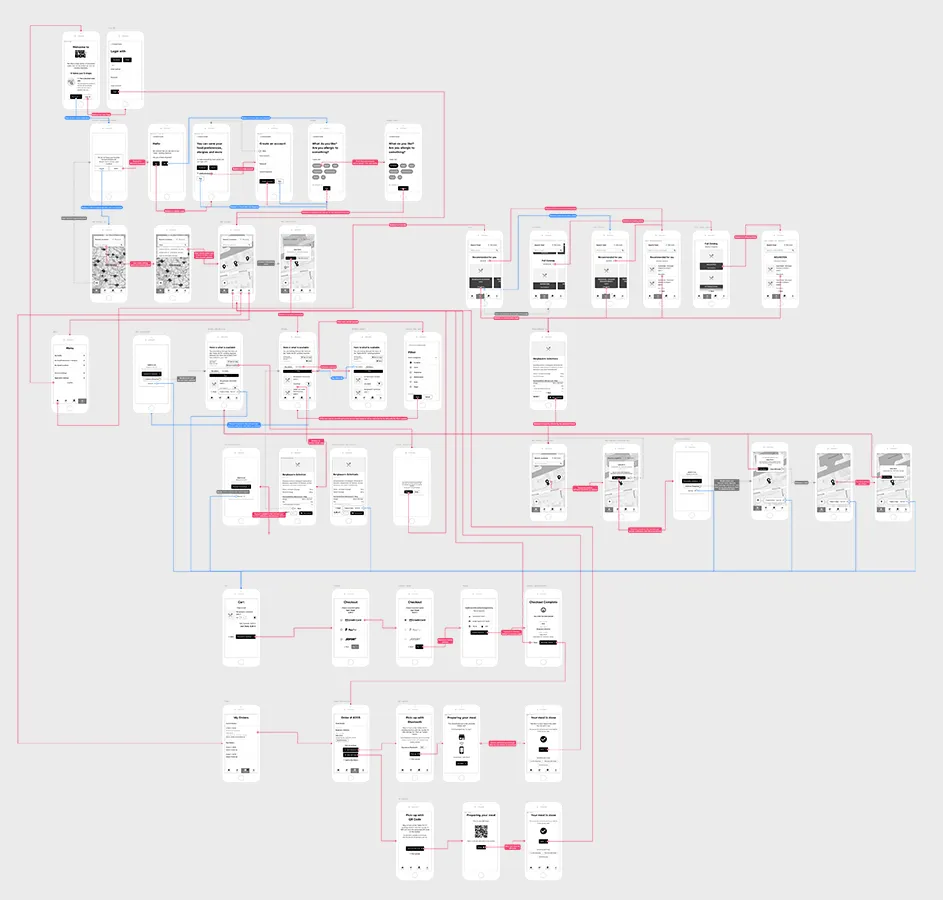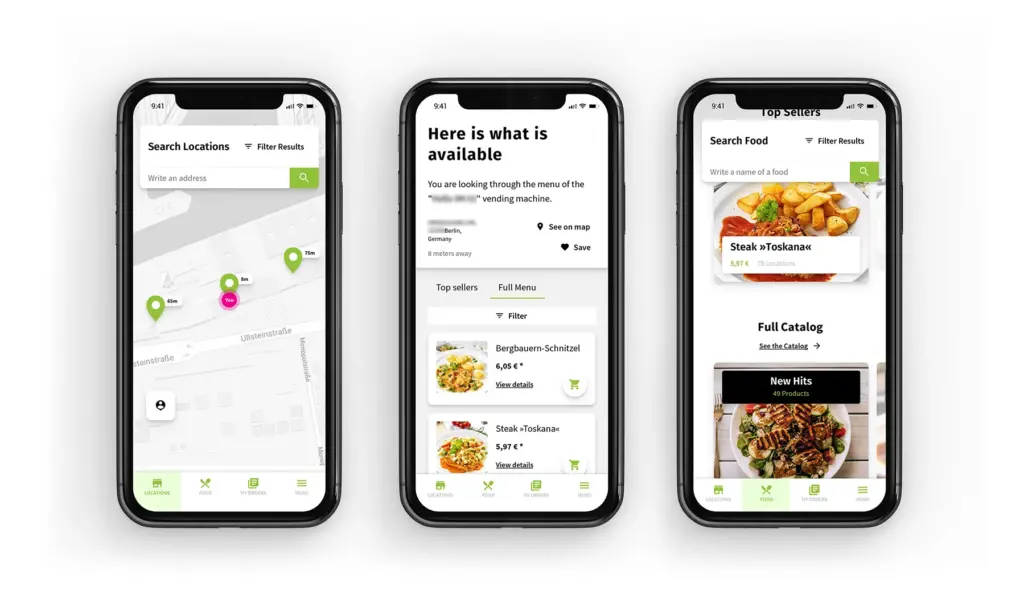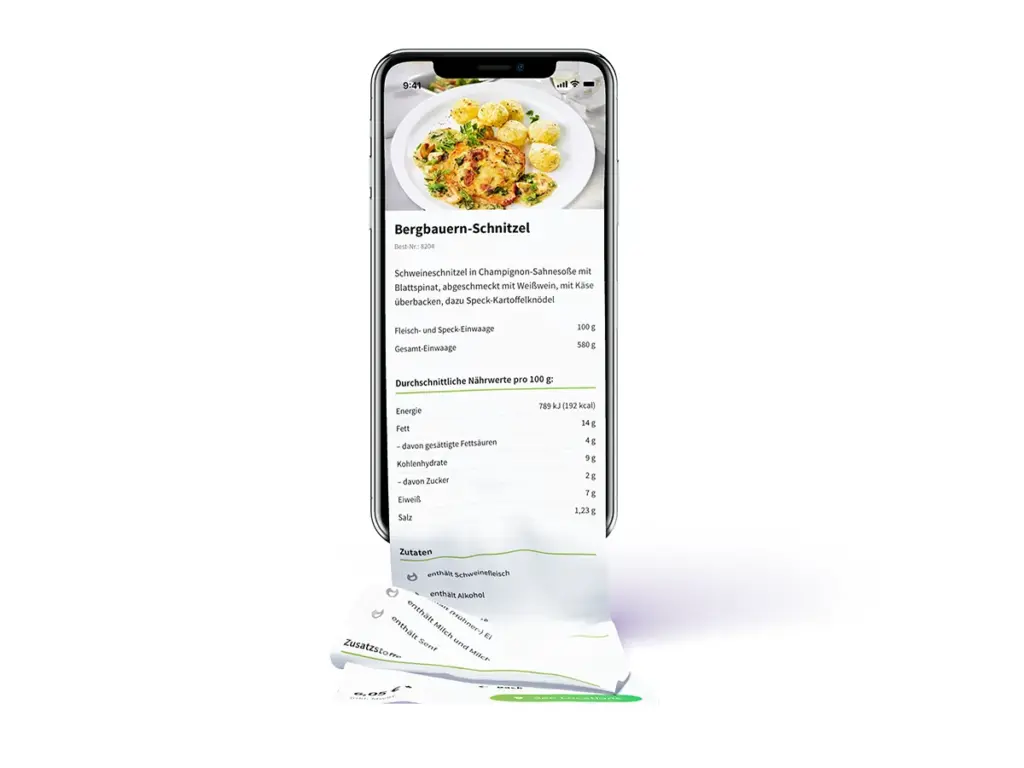Designing an Idea — IoT for Sales

1000
VENDING MACHINES
3600
orders per hour
70%
cheaper vending machines
The Problem
We would like to open a new B2C sales Channel. Any Ideas?
How about using Vending Machines to enter the End-Consumer (B2C) market? We will probably need an App for it.
This was the challenge that was initially presented to us.
Discovery
We started our Discovery Phase drawing up the necessary user flows in the form of wireframes and identified the processes that were needed for managing data like products, stocks, orders and the entire operational flow (logistics).
Based on the information we identified regarding the currently available Backend software and APIs, we came to the conclusion that the project scope needed to be extended from “a User App” to a system that would cover the entire Process.
New Challenges
As usual, the more you dive into a digital product the more complex it gets.
The logistics for restocking the vending machines were not covered by the existing processes. Since the logistics cycles for a B2B case are completely different than the B2C requirements, we needed to define a way to extend the vending machines restock process on top of the existing delivery system.
Also, the Hardware Costs (A Vending machine with 45 different slots that each had a Bluetooth module for opening the doors) were imposing new limitations in terms of available payment options machine side. We had to plan the entire User Experience on the Device (smartphone) and not offer any cash payment capabilities on the Vending Machine.
And of course, a short Time to Market requirement was impacting the whole scope and roadmap, so we planned from the beginning a Release plan based on an MVP (Minimum Viable Product) idea.
Solution
We designed a User App that will allow users to buy food from a vending machine and use BLE (Bluetooth Low Energy) based communication for interacting with the vending machine (IoT component of the project).
In order to comply with the “Low cost” requirements of the hardware (vending machine), and to reduce backend complexity we designed and integrated the entire buying process on the app rather on the vending machine.
For the Operational part, we designed a Restock App (using BLE and a QR code mechanism) that will allow the restock process on the vending machine slots and communicate the results to the server. This was needed in order to allow the system to have any product in any given slot.
Scalability was solved by moving essential server communication to the Cloud (AWS). Backend processes will be handled by a backend system that will act as an interface to SAP and also cover the management of vending machines and slots.
The defined solution covers all needed processes in order to operate the entire system (including SAP communication).
More than 210% growth in turnover and a tripling of profit from advanced multichannel strategies.

DANIEL BANICA
ACCOUNT MANAGER
The Process
Here are some highlights from our Information Architecture, Design and Technology definition process.
Information Architecture
The first phase was kicked off by analyzing the Target Audience and by creating 2 different buyer Personas.
For each Persona, we identified pain points and needs, which helped us to scope the product.

Wireframes were created for the User App and for the Restock App.

These were linked together in order to define the flows for the User, as a guide for the technical team.

The complete flows for the entire User App. The red line represents the main actions and blue secondary ones.
Design UI / UX
We had to rely on the existing CI/CD and that raised some problems in terms of usability (the Available CI/CD was created for print purposes only) and we decided to break some rules (the adapted UI has some new graphical elements) in order to create a good User Experience.
UI design, from left to right: Locations (using the GPS the user can see the closest locations), Location menu (available food in the vending machine) and the Food listing (this displays all possible food choices, separated in categories).

UI design for a specific meal with all details (image, description, ingredients quantities and allergens).

CRM DATA — Marketing
By embedding some simple user preferences (like food categories and allergens) and logging browsing and search patterns, as well as activities across different locations, we set up a foundation for collecting user data that can be later used for analytics, targeting and other marketing campaigns.
POC — Proof of Concept
We needed to be sure that the BLE communication was stable enough so we created a Proof of Concept in the form of an Android-only native App. We were able to successfully test the concept and evaluate the stability of the communication between the App and the Vending machine.
Vending Machine
Using a vending machine from a specialized partner we designed the exterior of the vending machine to match the customers’ Corporate Identity. Thinking End to End in terms of processes we created a Vending machine Design and introduced some “on-boarding elements” that should allow Users to quickly understand and use the system by scanning a QR code that will send the user to an on-boarding page.

Systems
The entire system is built on 4 main applications
– The User App — for buying food and opening slots
– Cloud Services — for managing high availability operations like stocks and orders
– The Restock App — the app used for the restocking of the vending machines, using a combination of BLE and QR code-based communication
– “The telemetric system” for facilitating User and logistic operation, as well as communicating with the backend Systems (SAP)
Technology Stack
The apps will be built using React Native — this tech stack will allow us to publish the Apps (user and restock) on the Apple store, as well as Google Play store. In a later stage, it can be migrated to React (and publish it as a PWA) and allow usage without having to install the app first.
The cloud service (high availability services) will be built on the AWS or Google Firebase technology.
The “telemetric System” will be built on Magento 2.3, using Magento headless and leveraging its robust capabilities for operating an e-commerce business. Through Magento, we will also ensure API based communication (REST and GraphQL) with the customers’ backend System.

Results
This is our Manifesto.
The system is designed to support up to 1.000 vending machines and handle over 3600 orders per hour.
A simple and easy-to-use interface should allow a rapid user adoption of the system. The management of the “last mile” logistics process and the possibility to “crowdsource the restock process” is innovative and hopefully disruptive. Moving most of the processes on the App and server-side will allow the usage of Vending machines that are up to 70% cheaper compared to the industry standard prices.
Market demand from similar companies (use cases) is very promising.



